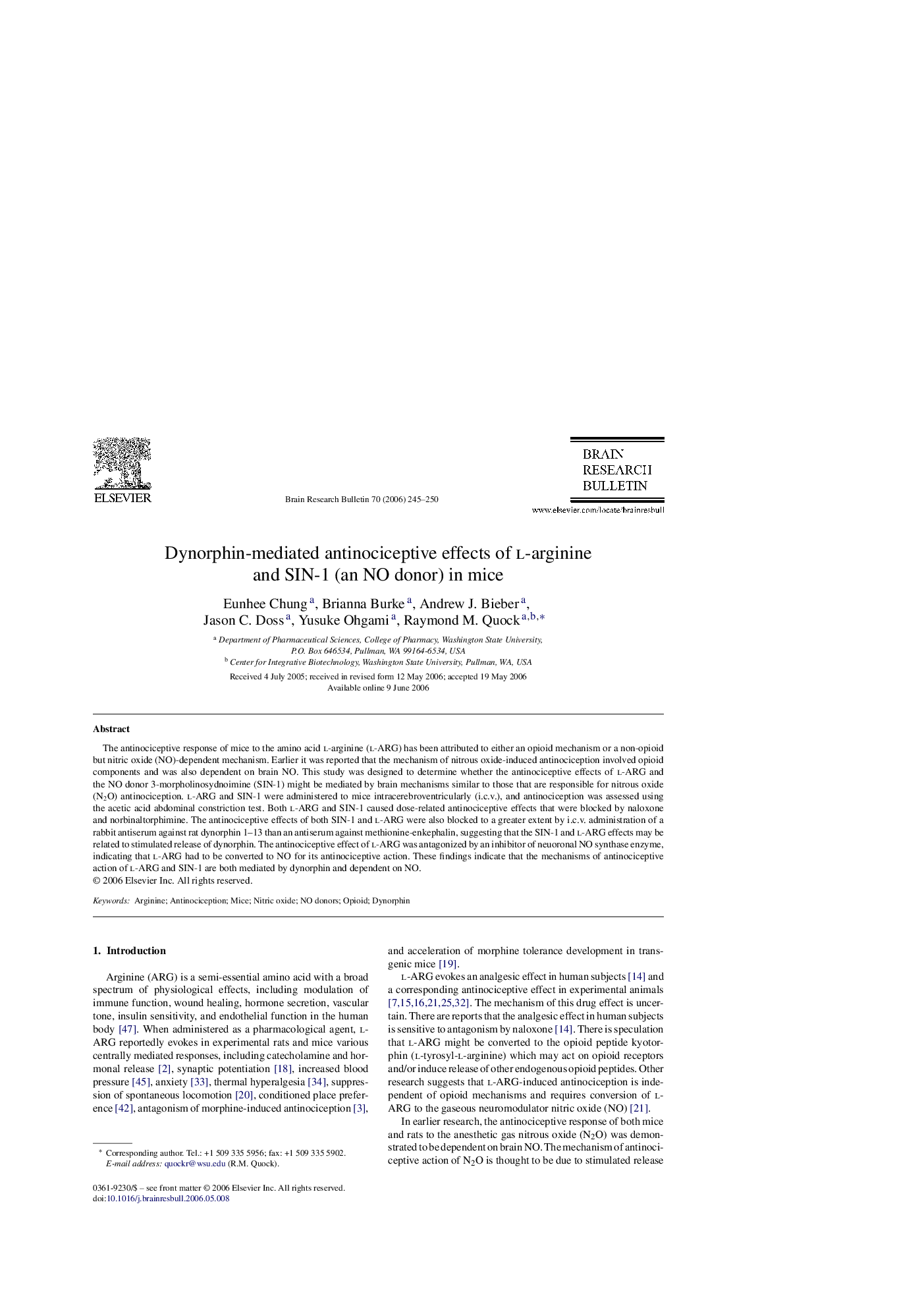| Article ID | Journal | Published Year | Pages | File Type |
|---|---|---|---|---|
| 4320269 | Brain Research Bulletin | 2006 | 6 Pages |
The antinociceptive response of mice to the amino acid l-arginine (l-ARG) has been attributed to either an opioid mechanism or a non-opioid but nitric oxide (NO)-dependent mechanism. Earlier it was reported that the mechanism of nitrous oxide-induced antinociception involved opioid components and was also dependent on brain NO. This study was designed to determine whether the antinociceptive effects of l-ARG and the NO donor 3-morpholinosydnoimine (SIN-1) might be mediated by brain mechanisms similar to those that are responsible for nitrous oxide (N2O) antinociception. l-ARG and SIN-1 were administered to mice intracerebroventricularly (i.c.v.), and antinociception was assessed using the acetic acid abdominal constriction test. Both l-ARG and SIN-1 caused dose-related antinociceptive effects that were blocked by naloxone and norbinaltorphimine. The antinociceptive effects of both SIN-1 and l-ARG were also blocked to a greater extent by i.c.v. administration of a rabbit antiserum against rat dynorphin 1–13 than an antiserum against methionine-enkephalin, suggesting that the SIN-1 and l-ARG effects may be related to stimulated release of dynorphin. The antinociceptive effect of l-ARG was antagonized by an inhibitor of neuoronal NO synthase enzyme, indicating that l-ARG had to be converted to NO for its antinociceptive action. These findings indicate that the mechanisms of antinociceptive action of l-ARG and SIN-1 are both mediated by dynorphin and dependent on NO.
